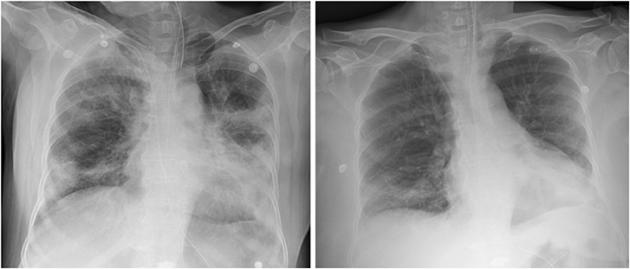Severance Hospital said Tuesday two critically ill patients have fully recovered from the new coronavirus (COVID-19) infection after receiving a plasma therapy with systemic corticosteroids.
The clinical experience raises the need for efficient management of donated blood from recovered COVID-19 patients, the hospital noted.

The research team led by Professor Choi Jun-yong of Severance Hospital’s Infectious Disease Division said the transfusing of plasma from recovered COVID-19 patients to two serious COVID-19 patients improved their symptoms. The two patients fully recovered and one of them was discharged, the hospital said.
The nation’s first report of the use of plasma therapy for COVID-19 was published in the latest issue of the Journal of Korean Medical Science, under the title “Use of Convalescent Plasma Therapy in Two COVID-19 Patients with Acute Respiratory Distress Syndrome in Korea.”
The report said one of the two recovered patients is a 71-year-old man with surname Kim.
Kim was diagnosed with COVID-19 after showing symptoms of fever and cough for 12 days in late February. Although he received antimalarial and anti-HIV treatments at a local public medical center, his conditions did not improve and he was transferred to Severance Hospital.

On arrival at the hospital, his respiratory rate was too high, over 30 times per minute (under 20 times per minute in healthy adults), and both of the lungs showed serious pneumonia symptoms. He had to use a ventilator due to an acute respiratory distress syndrome but the patient did not get better.
On day 10, the research team obtained convalescent plasma from a male donor in his 20s who had recovered from COVID-19 and administered the plasma in two doses at 12 hours interval. The team also started systemic corticosteroid treatment simultaneously.
As a result, Kim’s fever subsided and oxygen demand fell. The patient tested negative for COVID-19 after day 26. The patient underwent a tracheostomy and did not need a mechanical ventilator anymore, the research team said.
The other patient who received a plasma treatment was a 67-year-old woman, surnamed Lee, who had a medical history of hypertension. She was diagnosed with COVID-19 after a fever and muscle pain.
On day 3 after the diagnosis, she was transferred to Severance Hospital because of difficulty breathing and rising oxygen demand.
On arrival, she had a respiratory rate of 24 times per minute and oxygen saturation at 93 percent (over 95 percent in healthy adults). She had mild leukocytosis and depended on a ventilator due to serious respiratory distress. Despite the use of corticosteroids, persistent lymphopenia continued and viral loads were increasing.
The research team also gave Lee plasma transfusion from a male donor in his 20s who had recovered from COVID-19, two times at 14 hours interval. After the plasma transfusion and the corticosteroid treatment, her leukocytosis and lymphopenia were immediately recovered, the researchers noted.
The patient was discharged from the hospital on day 24.

Suppressing viral proliferation through neutralizing antibodies in plasma from recovered COVID-19 patients could help treat critically ill COVID-19 patients, Professor Choi said.
Despite plasma therapy’s side effects and insufficient scientific evidence for its efficacy, it might be “an additional option to treat patients without causing any severe adverse effects,” he added.
“When used with systemic corticosteroids, we might expect the possibility of reducing excessive inflammatory response by corticosteroids as well as promoting the reduction of viral loads by convalescent plasma simultaneously,” Choi concluded in the report.
He also emphasized that the authorities should build a system to efficiently secure and manage donated plasma from recovered COVID-19 patients.
“We need a control tower to collect plasma donators and distribute them efficiently,” he said.

